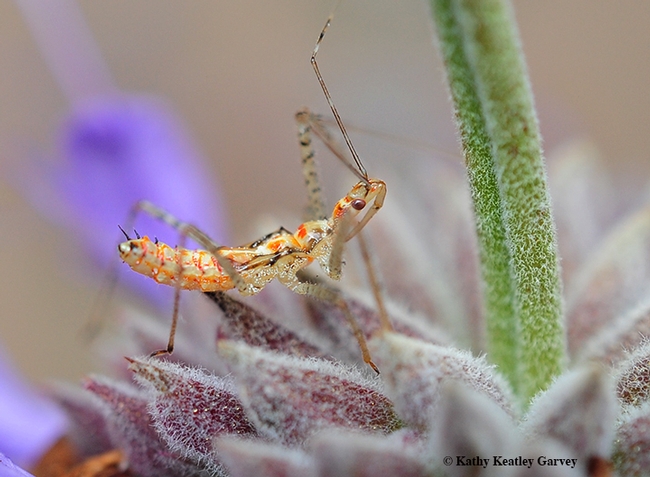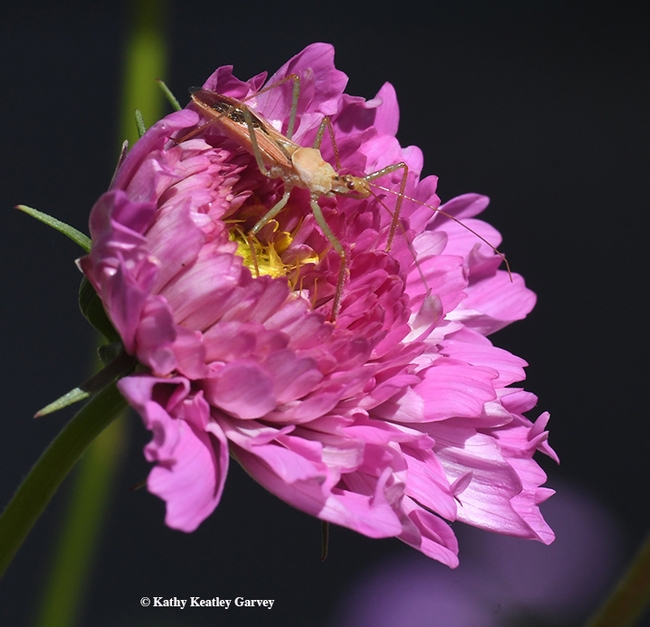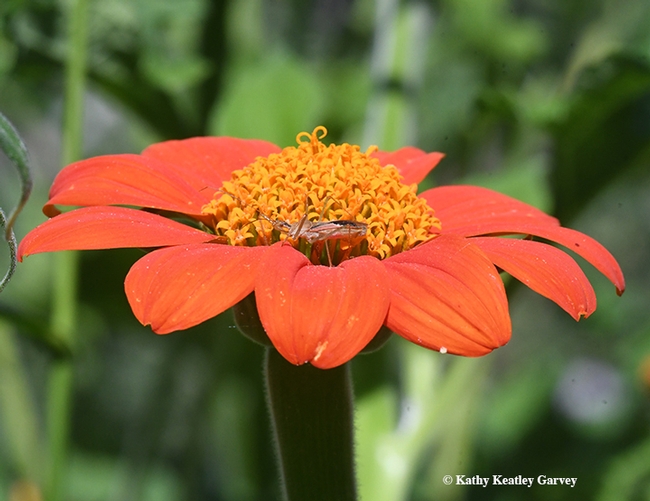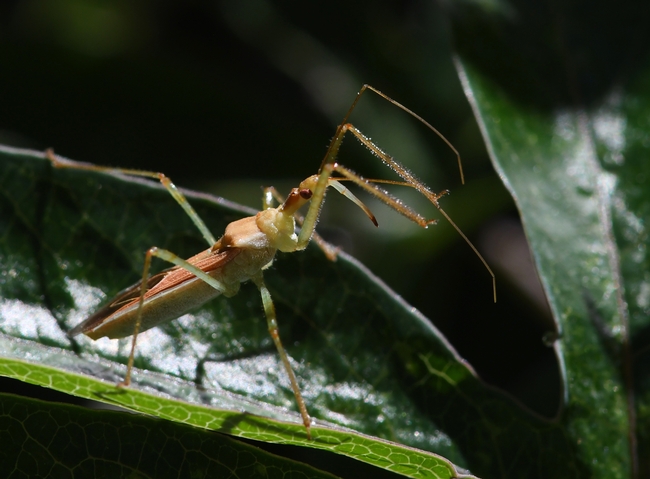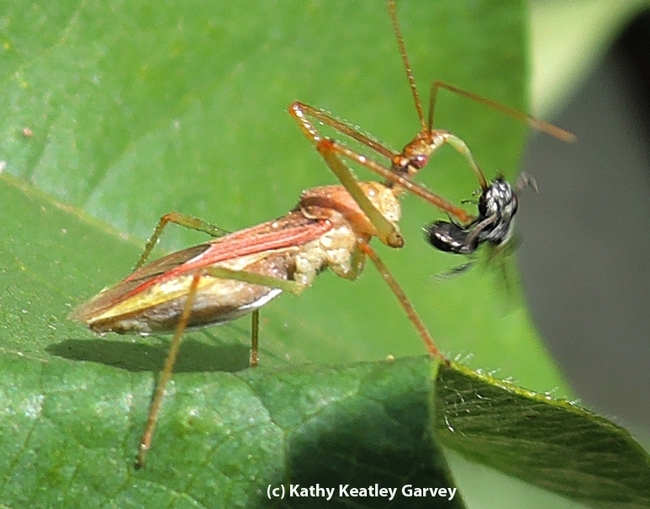- Author: Kathy Keatley Garvey
No assassinations today! But an "assassination attempt."
There it was, a leafhopper assassin bug, Zelus renardii, waiting for prey atop a Mexican sunflower, Tithonia rotundifola in a Vacaville pollinator garden. Yes, it's native to North America.
The assassin bugs, family Reduviidae, are ambush predators. When they ambush a predator, they stab it with their rostrum, inject venom, and suck out the juices. Or as UC Berkeley entomologists Jerry Powell and Charles Hogue write in their book, California Insects, "The victims, which include all kinds of insects, are snatched by quick movements of the forelegs, and immediately subdued by a powerful venom injected through the beak."
UC Statewide Integrated Pest Management Program (UC IPM) says that "Assassin bug adults and nymphs (immatures) have an elongate head and body and long legs. The narrow head has rounded, beady eyes and long, hinged, needlelike mouthparts. Adults and nymphs can walk rapidly when disturbed or capturing prey. Adults tend not to fly."
"Assassin bugs can occur on almost any terrestrial plant including row and tree crops and gardens and landscapes. All species are predators of invertebrates or true parasites of vertebrates," UC IPM relates. "Most assassin bugs feed on insects including caterpillars, larvae of leaf beetles and sawflies, and adults and nymphs of other true bugs. Nymphs and adults ambush or stalk prey, impale them with their tubular mouthparts, inject venom, and suck the body contents. Zelus renardii produces a sticky material that helps it adhere to plant surfaces and ensnare prey."
Some 7000 species of assassin bugs reside throughout the world. When they feed on such agricultural pests as fleahoppers, lygus bugs, aphids, caterpillar eggs and larvae, they are considered biological control agents.
However, "assassin bugs are not considered to be important in the biological control of pests, unlike predatory groups such as bigeyed bugs and minute pirate bugs," UC IPM says. "Assassin bugs are general predators and also feed on bees, lacewings, lady beetles, and other beneficial species. Certain species feed on the blood of birds, mammals, or reptiles, including conenose bugs and kissing bugs (Reduviidae: Triatominae)."
The one we saw today?
A long-horned bee, Melissodes agilis, stopped for a sip of nectar, spotted the assassin bug, and buzzed off, leaving only its shadow behind.
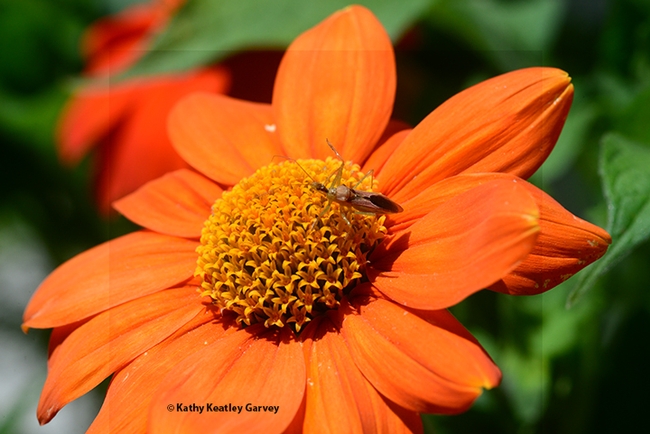
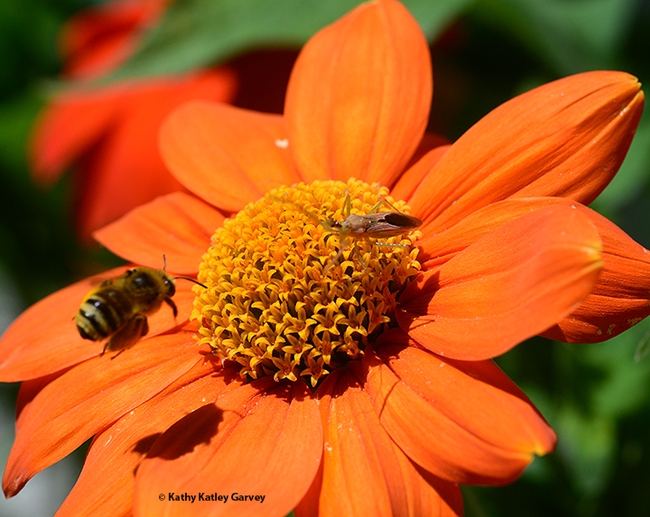
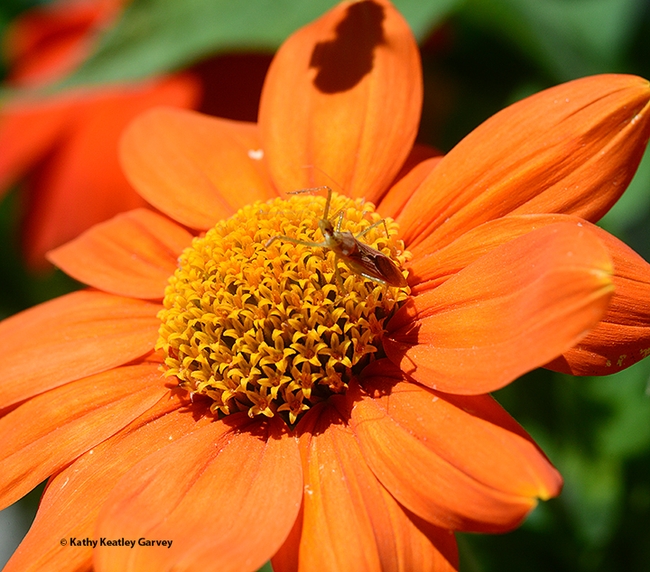
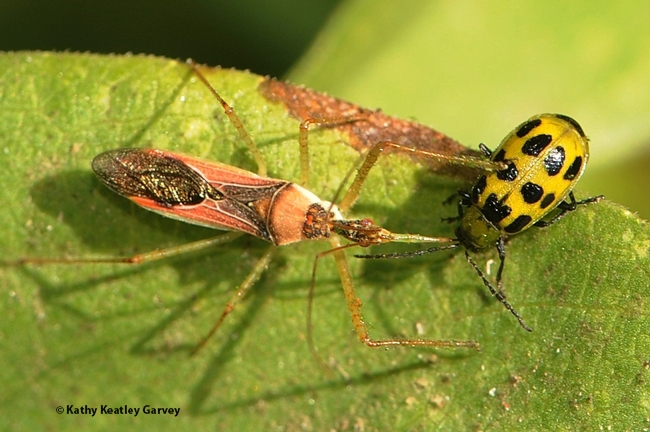
- Author: Kathy Keatley Garvey
Let's hear it for biocontrol.
You've seen lady beetles, aka ladybugs, preying on aphids.
But have you seen an assassin bug attack a spotted cucumber beetle?
No?
How about a crab spider munching on a stink bug?
All biocontrol, part of integrated pest management (IPM).
If you access the University of California Statewide Integrated Pest Management Program (UC IPM) website or more specifically, this page, you'll learn that "Integrated pest management, or IPM, is a process you can use to solve pest problems while minimizing risks to people and the environment. IPM can be used to manage all kinds of pests anywhere–in urban, agricultural, and wildland or natural areas."
Or, UC IPM's more in-depth definition:
"IPM is an ecosystem-based strategy that focuses on long-term prevention of pests or their damage through a combination of techniques such as biological control, habitat manipulation, modification of cultural practices, and use of resistant varieties. Pesticides are used only after monitoring indicates they are needed according to established guidelines, and treatments are made with the goal of removing only the target organism. Pest control materials are selected and applied in a manner that minimizes risks to human health, beneficial and nontarget organisms, and the environment."
Think of biocontrol as beneficial: "Biological control is the beneficial action of predators, parasites, pathogens, and competitors in controlling pests and their damage. Biological control provided by these living organisms (collectively called "natural enemies") is especially important for reducing the numbers of pest insects and mites, but biological control agents can also contribute to the control of weed, pathogen, nematode or vertebrate pests."--UC IPM
Yesterday we witnessed an incredible case of biocontrol in action.
At Bodega Bay's Doran Regional Park, Sonoma County, we spotted a great blue heron stepping stealthily through a thatch of ice plant in the Jetty campground. It was 6:30 in the morning. As campers slept in their recreational vehicles a few feet away, the great blue heron just kept stepping silently through the ice plant. One step. Another step. And another.
And then it happened. Its long sharp beak speared a rodent. Yes, they eat rodents. It crunched the body from head to toe, breaking the bones, and then swallowed it whole.
Not a pretty picture, but a simple case of biocontrol, compliments of a hungry heron.
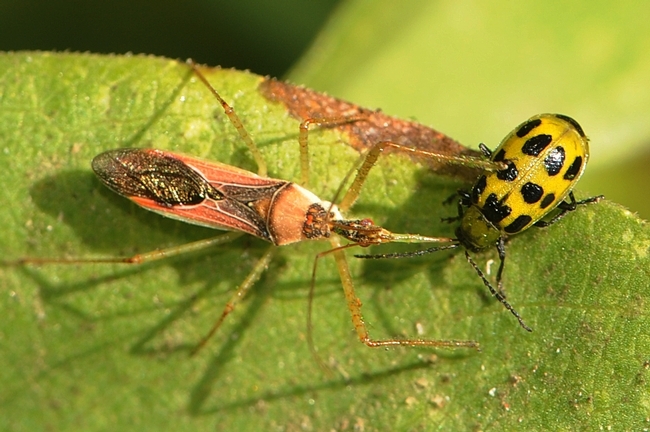
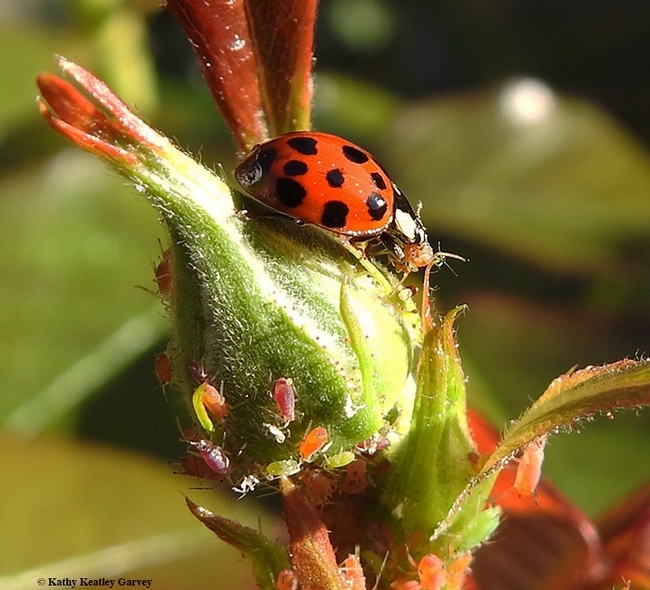
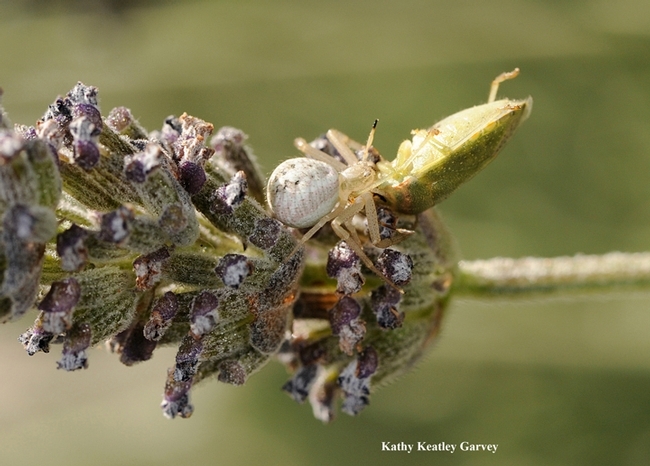
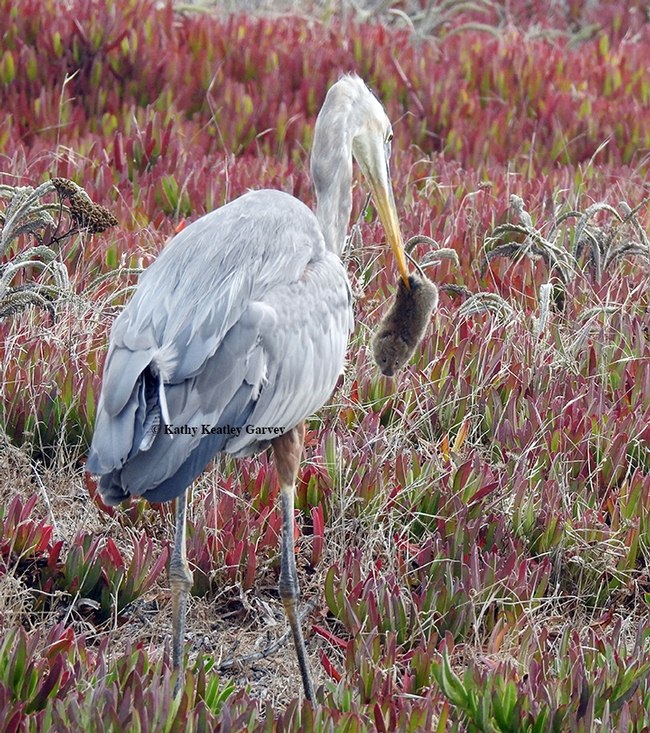
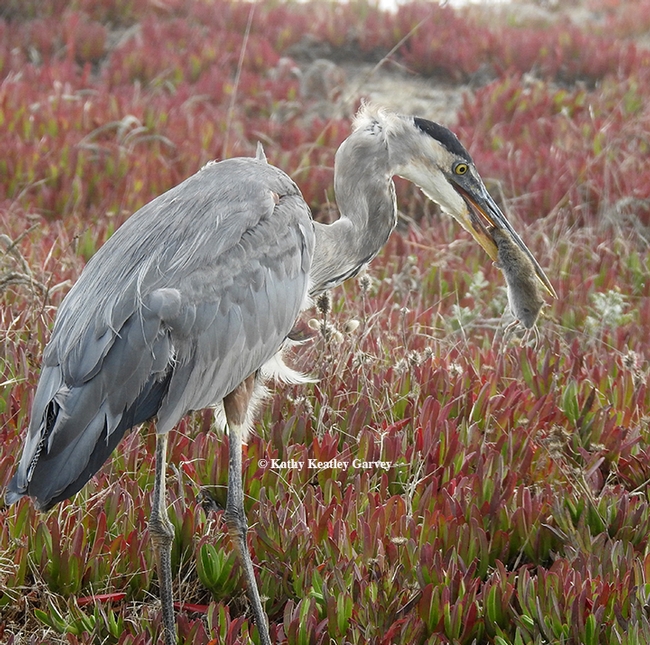
- Author: Kathy Keatley Garvey
A pollinator garden is a study in diversity--and of inclusion and exclusion.
The residents, the immigrants, the fly-bys, the crawlers, the wigglers, the jumpers. The big, bad and bugly. The prey and the predators. The vegetarians and carnivores.
The nectar-rich flowers attract honey bees, bumble bees and butterflies. And right near them are the predators: the praying mantids, dragonflies and assassin bugs.
The assassin bugs, family Reduviidae, are ambush predators. They resemble human assassins (or at least those on the movie screen!): long narrow neck, beady eyes, and sturdy body. When they ambush a predator, they stab it with their rostrum, inject venom, and suck out the juices. Or as UC Berkeley entomologists Jerry Powell and Charles Hogue write in their book, California Insects, "The victims, which include all kinds of insects, are snatched by quick movements of the forelegs, and immediately subdued by a powerful venom injected through the beak."
Such was the case with the assassin bug, Zelus renardii, this week. We watched one lie in wait on a Mexican sunflower (Tithonia); we watched another dine on an unidentifiable prey on a milkweed blossom; and we watched yet another stab a lady beetle (aka lady bug) on a leaf.
Everybody eats in the pollinator garden.
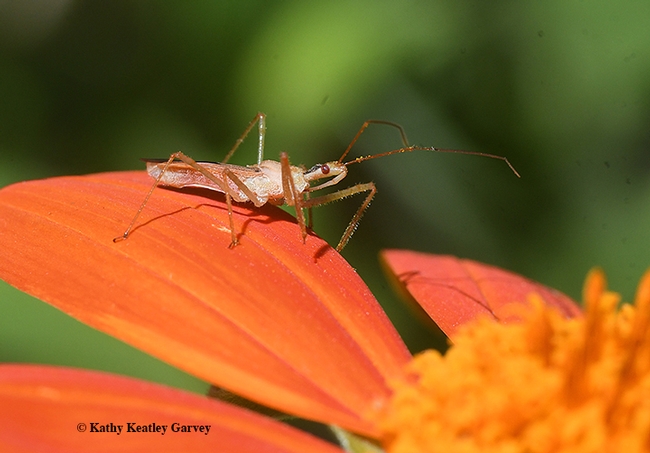
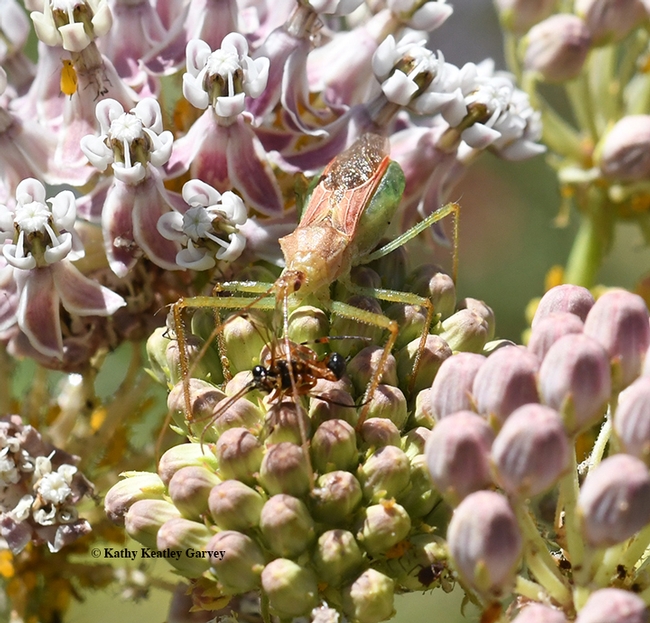
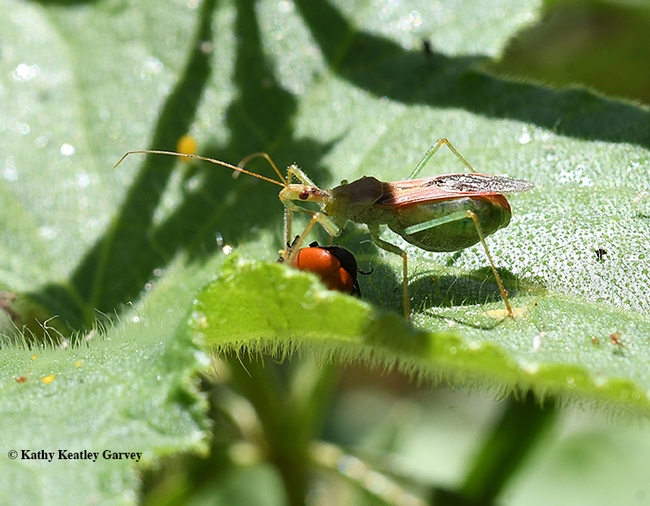
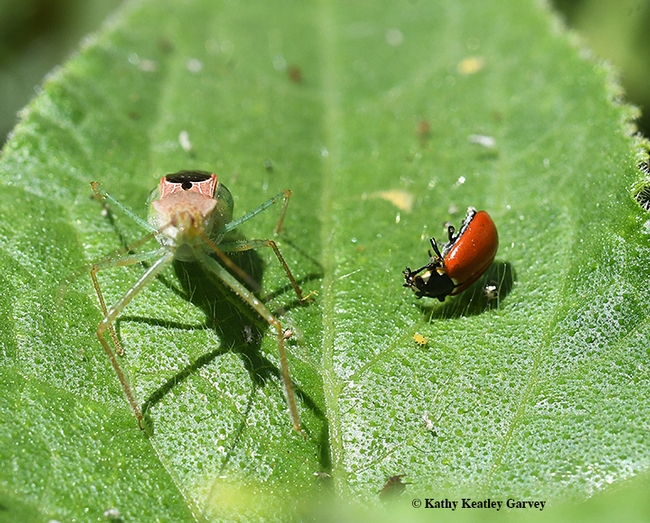
- Author: Kathy Keatley Garvey
Talk about "crafty"--as in cunning or sneaky--insects.
Ever seen a praying mantis ambushing a cabbage white butterfly?
Or an assassin bug targeting a spotted cucumber beetle?
Or European paper wasps attacking a Gulf Fritillary butterfly?
And, how about the other kind of "crafty" insects--like honey bees and European paper wasps creating those intricate nests?
"Crafty Insects" will set the theme for the Bohart Museum of Entomology's open house from 1 to 4 p.m., Saturday, Sept. 22 in Room 1124 of the Academic Surge Building on the UC Davis campus. The event is free and family friendly.
“We are hoping to have two parallel exhibits--one where we show crafty insects and then one where we are asking people to bring insect-themed crafts from their home--a plate with a cicada on it, or mug shaped like a wasp or we have a bee-shaped stapler for example,” said Tabatha Yang, education and outreach coordinator. “We'll have a place for them to display their crafts.”
“Crafty insects can be interpreted in two ways,” Yang commented. "‘Crafty' can be makers such as caddis fly larvae, case bearer moths, and potter wasps. The other crafty interpretation is sneaky, so our live orchid mantid, the dead leaf butterfly like Kallima inachus will be on display.” Activities are to include “spot the flower fly versus bee activity” and “spot the assassin fly versus bumble bee activity.”
For the family crafts, visitors will be painting rocks that can be hidden on campus or elsewhere. The Bohart Museum officials were inspired by Yolo Rocks and Solano Rocks, but a similar organization on campus, UC Davis Rocks, launched a similar activity last spring. It is the brainchild of Kim Pearson and Martha Garrison, who work in the arts administrative group in the College of Letters and Science.
Saturday, Sept. 22 is also move-in weekend for UC Davis students, so the Bohart Museum expects a lot of new people exploring the campus.
Bohart associates Jeff Smith, curator of the butterfly and moth exhibit and naturalist-photographer Greg Kareofelas will be on hand to shows the collection.
The Bohart Museum, directed by Lynn Kimsey, professor of entomology at UC Davis, houses a global collection of nearly eight million specimens. It is also the home of the seventh largest insect collection in North America, and the California Insect Survey, a storehouse of the insect biodiversity. In addition to the petting zoo, the museum features a year-around gift shop, which is stocked with T-shirts, sweatshirts, books, jewelry, posters, insect-collecting equipment and insect-themed candy.
For more information, access the Bohart Museum website at http://bohart.ucdavis.edu or call (530) 752-0493 or email bmuseum@ucdavis.edu.
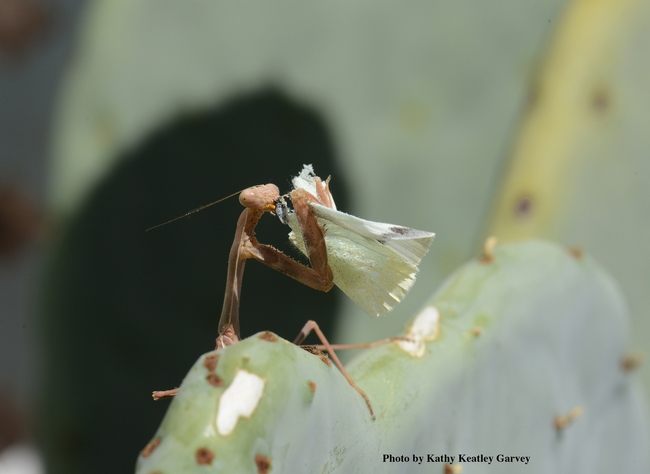
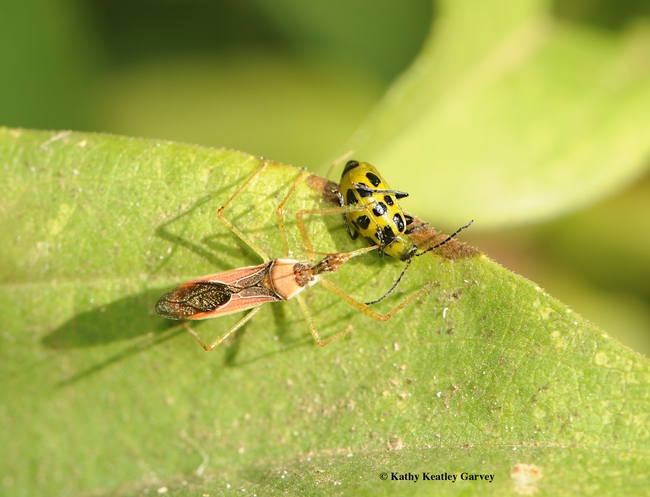

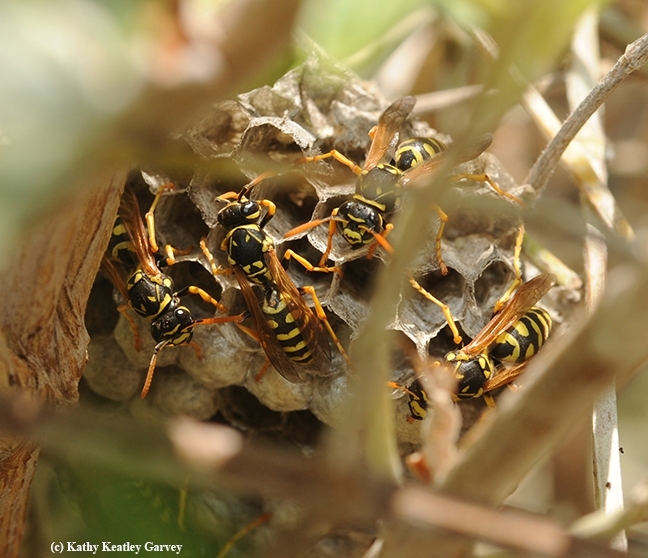
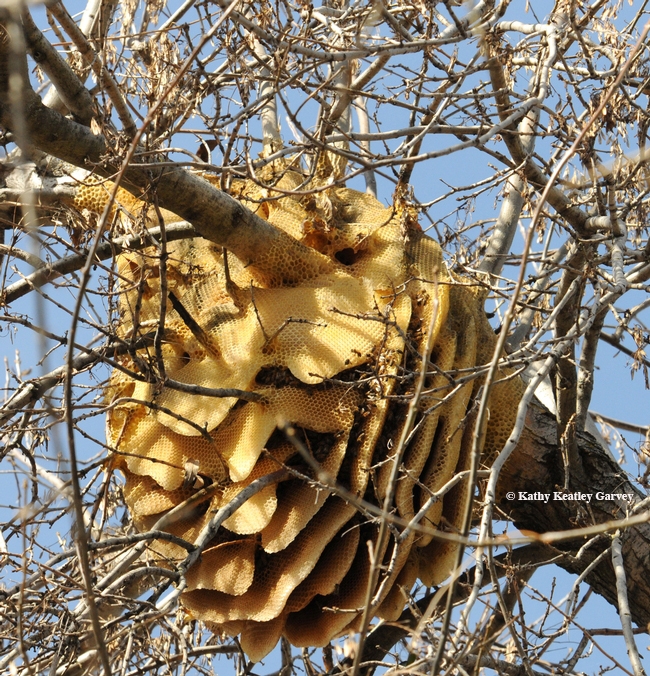
- Author: Kathy Keatley Garvey
Ever seen assassination attempts in your garden?
They are not pretty if you're the prey. Neither are the successful attempts.
Take the Zelus renardii, aka the leafhopper assassin bug.
They've been hanging out in our nectarine tree, cosmos, passionflower vine and Cleveland sage. They stalk or lie in wait and then jab their prey with their long rostrum, injecting a lethal saliva. Next: they suck out the contents. They "assassinate" such pests as aphids, leafhoppers, and caterpillars of the cabbage white butterfly.
Assassin bugs also feed on beneficial insects, too, such as bees, lacewings and lady beetles, aka ladybugs.
They're often confused with kissing bugs. Can "assassin bugs can carry Chagas disease, which can transmit to humans?" a reader asked.
We asked noted entomologist Lynn Kimsey, director of the Bohart Museum of Entomology and professor of entomology at UC Davis, for comment and clarification.
"Assassin bugs and kissing bugs belong to the same family of insects, the Reduviidae," Kimsey said. "However, biologically they are very different. Kissing bugs belong to 20 or more species in the subfamily Triatominae. They are nocturnal blood feeders, and you almost never see them during the day. Most of these species in California are infected with the protozoan that causes Chagas disease, but because of differences in how they feed, few if any can actually transmit it to humans."
"The pathogen is transmitted in their droppings and have to be inhaled or scratched into the skin," Kimsey pointed out. "This only happens if the kissing bug defecates during feeding. The California species do not defecate until they leave the host and go back to a resting site, so the chances of getting Chagas disease from a bug in California are cosmically small. The assassin bugs you see during the day belong to an entirely different group of reduviids. They are all predators on other insects. Some of them, like the common garden assassin bug Zelus, are irritable biters but they do not transmit any kind of pathogen to anything."

